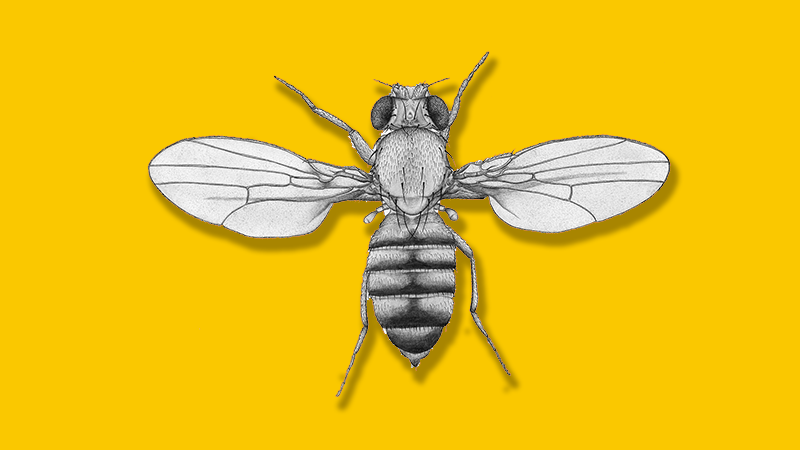Our medicinal chemistry advisor and pharm/tox consultant have asked me, “Do flies have livers?” I didn’t fully appreciate why they were asking me this until learning more about drug metabolism.

In the body, foreign substances, or “xenobiotics,” (pesticides, cleaners, drugs, etc) are made water soluble through chemical modifications so that they can be more rapidly excreted. One type of chemical modification takes place mostly in the liver via a class of enzymes called cytochrome P450s, or “Cyps.” Cyps catalyze oxidation, hydroxylation, or dealkylation reactions that expose water soluble polar groups (hydroxyl, amino, carboxyl, sulfhydryl). These Cyp-mediated reactions are referred to as “Phase I” metabolism. The first reaction below illustrates the Cyp-catalyzed oxidation of Acetaminophen into NAPQI. Phase II metabolism solubilizes xenobiotics through conjugating hydrophilic molecules. The top right reaction below illustrates the conjugation of glutathione (G-SH) to NAPQI via the enzyme glutathione-S-transferase. As a side note, NAPQI can be conjugated to proteins that have sulfhydryl groups (“Protein-SH” on bottom right). This reaction happens more when levels of glutathione are low. NAPQI conjugation will damage these proteins and the cells they reside within, explaining why high doses Acetaminophen can cause liver damage.
Image credit: http://watcut.uwaterloo.ca/webnotes/Metabolism/drugsPhase2reactions.html
Phase I and Phase II metabolism of xenobiotics takes place mainly in the liver, but also the small intestine and kidney. Since we are using flies for drug discovery, and so much of whether a compound can become a drug depends on how it is metabolized, our advisors are curious about how drugs are metabolized in flies…hence the questions about fly livers.
Flies and humans metabolize xenobiotics similarly. The studies I like best utilized natural isolates of flies that became resistant to the insecticide DDT. One DDT resistant strain was isolated in Japan in the 1960s, and another strain was collected in Wisconsin in the late 90s. The researchers’ showed that of the ~90 Cyp genes, both the Japanese and Wisconsin DDT resistant flies only overexpressed Cyp6g1. They performed classical mapping and determined that the element responsible for Cyp6g1 overexpression, and DDT resistance, was a transposon insertion upstream of the Cyp6g1 gene. They designated this allele as Cyp6g1DDT-R . An interesting aside is that they could not find Cyp6g1DDT-R in lab strains isolated in the 1930s and earlier, which is before DDT became used as a pesticide. However, it was present in 28 of 75 strains isolated after DDT usage. Since those strains were maintained for many years without selection in DDT, Cyp6g1DDT-R must have no cost, at least not to lab strains. To support that Cyp6g1 overexpression is the cause of DDT resistance, they created transgenic flies where Cyp6g1 could be overexpressed in a DDT susceptible stain. Cyp6g1 overexpression made the DDT susceptible strain become DDT resistant (Daborn, et. al, 2002, Science).
Like Cyps, there’s evidence that glutathione-S-transferase has been positively selected upon to improve DDT metabolism. There’s also lots of evidence for the involvement of glutathione-S-transferase in pesticide resistance in mosquitos and house flies.
I’m hoping this blog will now come up when this is searched for: “Do flies have a liver?” They don’t exactly have a liver, but the analog is called the fat body. Chung and colleagues (see below) showed that many of the ~90 Cyps are expressed in the fat body, and most of the others are expressed in the small intestine analog (midgut) and the kidney analog (Malpighian tubules) (Chung, et. al, 2009, PNAS).
When using simpler model organisms like Drosophila in drug screens, the compounds can be metabolized by Phase I and Phase II enzymes. This is a great advantage because it means that suboptimal compounds that would be quickly metabolized, or metabolized into toxic biproducts, will be weeded out during the screening process. This enables resources to be focused on only the most promising compounds.




